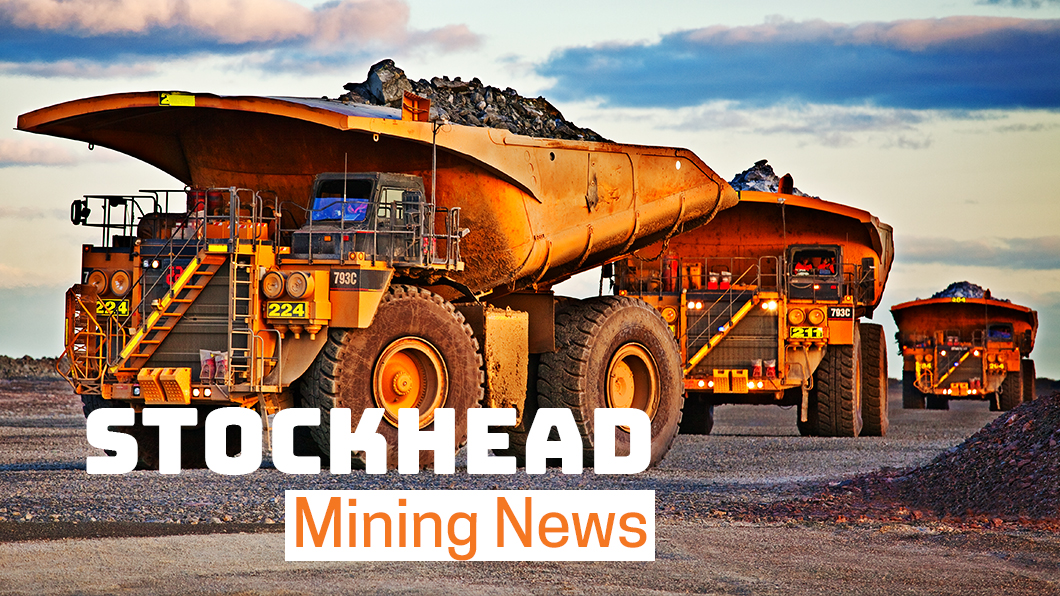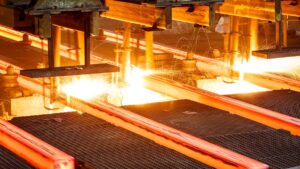Vale suspension buoys Australian iron ore, price climbs 5pc

Pic: John W Banagan / Stone via Getty Images
- Iron ore prices have increased by 5 per cent
- This follows Vale suspending operations at its Viga concentration plant
- Australia’s iron ore sector could benefit
Australia’s iron ore sector is poised to benefit – at least in the short term – from a 5 per cent increase in iron ore prices after Vale suspended operations at its Viga concentration plant.
The benchmark 62 per cent iron fines imported into northern China last traded at $US123.47 ($172.27) per tonne on Wednesday, up 5 per cent from Tuesday.
The Brazilian iron ore producer – the second largest in the world – was forced to suspend operations at the plant to comply with a court decision, which it said it would contest, taking production of about 11,000 tonnes of fines per day off the market.
Magnetite Mines (ASX:MGT) non-executive director Mark Eames told Stockhead the surprising thing about the market response to the Vale announcement was how finely balanced the iron ore market was.
“Viga produces about 4 million tonnes per annum, or just a quarter of a per cent of global supply. It’s a very small operation and yet the index was up 5 per cent in response to the news,” he explained.
Eames added that while COVID-19 had raised significant question marks about supplies in the market, mining around the world was not significantly disrupted in most commodities.
“What I think is a significant part of this is the two tailings dam collapses in the past few years that involved Vale,” he noted.
“I think the cause of this is really probably firstly that it does mean a withdrawal of high-grade supply that is in high demand from the market, and secondly that people are just genuinely concerned that Vale seems to be having persistent problems in managing tailings and the regulatory oversight of those tailings operations.
“So the fact that there’s a surprise announcement like this when Vale’s own guidance has been that these plants are going to return to service and stay there, I think that’s also given the market a surprise.”
Iron ore prices
Eames added that any disruption in Vale’s production would either assist in increasing Australian iron ore volumes if there is volume available or increasing prices, both of which will benefit Australian exports.
“The interesting thing in the last five years is that Chinese steel production is up about 25 per cent but iron ore production is only up less than 5 per cent,” he added.
“So we have seen a progressive tightening in the iron ore market over the last five years and it is now so tight that news about one small operation is enough to cause a significant shift in the price.”
Small cap iron plays
Fenix Resources (ASX:FEX) has started early site works at its Iron Ridge DSO project near Cue, Western Australia, which remains on track to start iron ore production later this year with the first shipment scheduled for early 2021.
DSO refers to “direct shipping ore” – namely, minerals that require only minimal processing such as crushing before they are exported, which keeps costs low.
The company secured key mining approvals for its project in mid-September.
Fenix is proposing to ship 1.25 million tonnes per year of DSO iron ore from Geraldton.
Iron Ridge has a current ore reserve of 7.76 million tonnes grading 63.9 per cent iron.
GWR Group (ASX:GWR) recently executed a terms sheet with Pilbara Resources Group that covers the development of its C4 iron deposit.
Pilbara Resources Group has been engaged to carry out agreed works for development, mining and transport of stage-one of the project.
Both companies are currently well advanced in completing formal contract documentation and completion of a project budget.
The C4 deposit at Wiluna West is 1.4km long and contains a combined DSO hematite JORC resource of 21.6 million tonnes at 60.7 per cent iron.
FEX and GWR share price charts
Meanwhile, Jupiter Mines (ASX:JMS) is spinning its Central Yilgarn iron ore assets in Western Australia into a new IPO.
The proposed new company will seek to fast-track development of the Mount Mason direct shipping ore (DSO) hematite project, establish a consolidation platform to grow the existing DSO resource, and explore options to advance the Mount Ida magnetite project.
The small but high-grade Mount Mason project is expected to have a low start-up cost with a short payback period.
It has current measured and indicated resources of 5.9 million tonnes grading 60.1 per cent iron.
Magnetite Mines is raising $5.65m through a rights issue to accelerate re-feasibility work on its 4-billion-tonne Razorback iron ore mine in South Australia.
The rights issue for existing shareholders is partially underwritten by Mahe Capital to $4m while eligible shareholders will be offered the opportunity to acquire one new MGT share priced at 1c for every four shares that they hold.
Proceeds will be used to accelerate work on the pre-feasibility study (PFS) to develop the optimum business case for Razorback.
Razorback project has all the right ingredients to make it a lower cost development project than other mines.
Not only is the resource is at surface with low stripping ratios, it also features rocks that are much softer than other iron ore projects and thus require less energy to grind.
The company has since started permitting and environmental studies for the project.
In early September, Strike Resources (ASX:SRK) was granted an initial 21-year mining lease for its advanced Paulsens East iron ore project.
This paves the way for the company to lodge its proposal for formal approval to start mining.
JMS, MGT and SRK share price charts
Related Topics
UNLOCK INSIGHTS
Discover the untold stories of emerging ASX stocks.
Daily news and expert analysis, it's free to subscribe.
By proceeding, you confirm you understand that we handle personal information in accordance with our Privacy Policy.








